Jamie Jean Schneider DommDigital Strategist, Social Media + Big Data, North American Division Even the best writers must adapt their style for online writing. While learning the rules and best practices of academic or journalistic writing creates a solid educational foundation, online writing requires a completely different style and approach to get the point across as quickly, clearly, and effectively as possible. Copy that’s written for an online audience may seem too simple, even formulaic, since this type of writing is more casual and straight-forward. However, years of research proves its effectiveness in the digital space. Bottom line: the goal of writing online content is to connect with the reader, not elevate the author. It’s about meeting the reader where they are and giving them the information they seek, all while “desiring their good” (sound familiar? MH, 143). In other words, it’s not about us; it’s about those we are seeking to serve. As you read through this section, remember: Good communication is when you communicate in a way your audience understands. Writing for an online audience is not the time to communicate in a way that highlights the author’s vocabulary or intelligence. Our goal is always to uplift Christ first, and this means putting self aside in all aspects of ministry and prioritizing the needs of those we serve. We should endeavor to meet people where they are, on the platforms where they spend their time, in the way they prefer to consume content, and with language they can connect with. 9 Principles for Writing Strong Online Content1) Remember the four primary purposes for online writing (content evangelism). Effective online writing has at least one of the following primary goals. This is especially true for content marketing/evangelism, which requires consistent production and distribution of quality content to attract, engage, and nurture an audience. The four purposes are:
2) Write like you’re talking to a friend: conversationally. The best online writing is conversational, yet straightforward. Think about how you’d explain something new to someone you know, and write just like you would speak (minus tics, fillers, and mannerisms). You wouldn’t waste time on flowery, poetic words, and you’d try to relate your concept to your friend’s life. You’d be up front about why this subject might be of interest and how it could benefit them in particular. The number one reason people share content online is because they feel it will improve the lives of others. As digital evangelists, our goal should be to create sharable content that benefits the lives of others. The Church should be a leader in creating content of this kind. In addition, you shouldn’t spend a lot of time on technical details or bells and whistles, unless you know your friend is interested in that. Instead, you’d focus on how this topic will affect them personally. The great part of writing targeted online content is that, as long as you’re clear about your topic, your demographic will already be interested in what you're writing about! After all, they have searched for topics mentioned in your articles or posts and decided your page is worth visiting. Since your readers used a search engine, social media post, email message, or other website to get to your content, you don’t have to worry about convincing them that the topic itself is interesting. Your job is to convince them that you have information about their chosen topic that is better, deeper, more interesting, or more applicable than other sources. Ask yourself: what will the reader get from my content that they can’t get from someone else? Getting to your point early—in the headline, subtitle, and opening paragraph—is key. Think about that conversation with a friend. Have you ever been in a conversation where your counterpart struggled to get to the point? They’re over-explaining the peripheral details, giving too many examples or metaphors, or trying to come up with language that softens the blow of an edgy idea or uncomfortable topic instead of outright saying what they mean. You’d quickly realize how much time is being wasted and you’ll wish you had asked someone else to begin with! That’s how an online reader feels when the content doesn’t get to the point. They’ll click “back” and go to the next link in the search results. Tips for writing conversationally:
3) Evoke an emotional response. Reaching your target audiences in a deep and emotionally compelling way is key to effective communication, powerful evangelism (marketing), and creating authentic connections. In the case of mission work and cause-based initiatives, strategic placement of key words can help facilitate deeper thought and increase impact on the reader, driving them to action. The best headlines and teaser lines receive an “Emotional Marketing Value” (EMV) score of over 40. In other words, the best online writing incorporates high impact words in a way that is quickly understood by the reader and evokes an emotional response. We are after all, highly emotional beings, who often make decisions based on what directly affects us. In a world of competing priorities and overwhelming need, this can be a useful tool to help your message stand out among the digital clutter. Afterall, your message must be read in order to have impact. The emotional richness of copy is evaluated based on three categories: Gorgeous2God example: Life is tough but you're not alone. Join our community of young Christian women tackling real issues from a godly perspective.
Remember to also boldly make your claim up front, then use the rest of your content to back it up. If the point you’re making is a bit jarring, that’s not necessarily a bad thing. Plus, by getting to the point early, you tell your audience why they should prioritize your content over someone else’s. People are busy; state the value up front and then deliver on that promise. Consider the idea of inspiring people by agitating emotional states: People don’t do things because they’re comfortable. People don’t do things because they’re bored. People do things because they’re excited, outraged, empowered, inspired, shocked... Example: Feeling depressed? You're not alone. 10 ways a relationship with Jesus will dramatically improve your life.
4) Move your reader to action. The heart of copywriting is persuading readers to take an action. Sometimes, when we think of marketing copy, we think about those spammy e-mail subject lines that over-promise and over-guarantee, or we cringe at clickbait headlines for videos or blog posts. Well, if sales copy puts a bad taste in your mouth, keep in mind that you’re thinking of bad sales copy. When copywriting is done conversationally, with the reader’s feelings, interests, and beliefs/core values in mind, it can be incredibly effective. Remember, people are drawn to authenticity and honesty. Church messaging should always demonstrate the highest level of integrity. Define the problem Throughout a piece of writing, a reader is moved to action by introducing a problem that the reader needs to solve. They want something, they’re confused about something, or they don’t know the next step in a process. You outline the problem, describe the implications of this problem, and then give them the solution—your resource, your solution, your method, your information, etc. Benefits vs. features When describing how great your resources/belief/method/service/information is, don’t just list its features—describe the benefits it will provide to your reader, and why those benefits are in their best interest. People want to know why before they take the time to understand the how. For example: “Buy our hibiscus tea!” Why? “Our blend has more antioxidants.” Ok...what does that mean? “Antioxidants decrease free radicals in your bloodstream.” Ok...what does that mean? “Antioxidants keep the cells in your body from breaking down!” Ok...but what does that mean for me? “Well, this tea has been shown to help lower high blood pressure, according to the American Heart Association’s 2008 study.” That sounds pretty important. How does it taste? “Great! Especially with honey!” Well, all right then—why didn’t you say so? When we’re personally invested in the subject of our writing, we can get lost in the details. Remember that the readers aren’t there yet. They need to see a connection between what they’re searching for and what you have to offer. For example: “You’ve been diagnosed with high blood pressure, and it can be tough to give up some of the foods and beverages you’ve enjoyed for years—like coffee, black tea, and soda.” You speak the truth. It’s like you’ve been there, man! “But what if there was a soothing hot drink that could be just as tasty, AND help lower your blood pressure at the same time?” Is there? That would be so helpful right now! Tell me more! Superperfect Tea Company offers premium hibiscus tea. And, according to a 2008 study by the American Heart Association, it lowers blood pressure in pre-hypertensive and mildly hypertensive adults. I could use that! How does it taste? This ruby-red herbal tea has a slight tart flavor reminiscent of cranberries. Add a little honey, and it delivers a light, tangy “bite” that can pick you up in the afternoon or calm you down in the evening. Mmm. Can I try some? Notice how the problem was outlined in the introduction, with the primary benefits immediately following. Meet the readers where they are, then tell how your amazing product is just what they need...and why. Now, if we frame this in the context of ministry, your product is your message, which may be hope, wholeness, health, lifestyle, truth that answers their deepest longing, answers to their physical/spiritual needs, sound advice, and more. Calls-to-action (CTA) Once you’ve “sold” the product by connecting with your readers’ needs, it’s time to tell them to buy it! In ministry, this may mean subscribing to your newsletter, registering for a seminar or health clinic, coming to an event, or joining a small group dedicated to a particular topic. Don’t leave them hanging. They want to take action, and the more clear and straightforward the call, the more likely they are to follow through. You may have already imagined a call-to-action following the last line of the hibiscus tea conversation: “Yes! Get 20% off your first box of tea when you order now!” or “Yes—get a free sample sent to you now!” Copywriting isn’t complete without a call-to-action. It doesn’t have to be overly clever or cute; it just needs to make sense. Here are the most common calls to action that appear in online marketing:
5) Tell stories. To share stories is human and approachable. There is an old Jewish parable of “Truth & Story” where naked Truth traveled from village to village trying to find acceptance and love. In each village, Truth was mocked, ridiculed and ultimately chased away. Naked Truth was hated by all she encountered. From afar, Truth saw Story, dressed in beautiful robes, enter the village that had just rejected her. The people loved Story and praised her beauty, quickly embracing her. Story later found Truth crying far outside the village and asked what was wrong. Truth revealed her desire to be accepted like Story and shared the pain of her experiences. Taking pity upon Truth, Story shared some of her beautiful robes with her so that she was no longer naked. From then on, Truth and Story always traveled together, and everywhere they went, the people rejoiced and welcomed them. Storytelling is a powerful means of communication online because: Stories never tell us what to think, they give us something to think about. Stories don’t tell us what to feel, they cause us to feel. Effective writing is both a science and an art. Yes, wordsmithing is a creative process, but copywriting is a science backed by research. A great way to add creativity to the elements of formulaic copywriting is through storytelling. People can’t help but be interested in stories. As humans, we want to know how things turn out! For generations, storytelling has been the way people learn their history and connect. The Bible itself can be viewed as a collection of stories that draw people to God, teach us difficult truths, and connect us through a shared set of beliefs. To “win” souls, we, as a Church, must connect with a person’s experiences through stories. Not only is storytelling a powerful means of communication, but a vital tool for sharing a message of hope. Jesus told parables because truths revealed through stories are an effective way to reach people with thought-provoking topics that are easy to remember. We, like Jesus, should become expert storytellers. Storytelling connects people and gets them engaged and interested in each other. The reason why people love watching movies and reading books is because we love to be immersed in stories. Social media is people connecting with people to create a collective human story. Our job is to frame that story within the context of our faith. We can provide answers and connection online users are looking for, if we’re strategic and intentional with what we write and the content we create. Stories can be in the form of case studies, testimonials, video retellings, or simple anecdotes that describe how a person—just like the reader—struggled with a specific problem. Maybe they tried several things until finally discovering what really worked. Where can you find real stories? As a ministry, you might already have them. Think of the people you’ve served. Think of the events you’ve held. Think of the testimonies your constituents have shared with you. How does their journey reflect a common need or experience within your target audience? Going deeper, what analogies or metaphors can you draw from what you do? Can it be related to common daily life concerns? How does your ministry offer practical solutions? Check out this article on finding marketing stories in everyday life. Write down a story that you would share with your audience that could come across as relatable and relevant to their core values or needs. 6) Know the difference between content writing and copywriting. While these terms are sometimes used interchangeably, they are different. Copywriting refers to the science, the persuasive writing formulas, the headlines, and the calls-to-action. Content writing could be considered the filler content that fleshes out the formulas for content marketing purposes: the stories, the details, the background information, the educational steps, or other valuable pieces of information you’re offering your reader. In many ways these two elements of writing overlap and work together, and both occupy vital roles in the digital evangelism process. There are increasingly specific definitions of these two terms across the internet, but the bottom line is that these writing styles and formulas work together to provide value to the reader, persuading them to stick around and, eventually, take action. 7) Know how to use evergreen vs. time-sensitive content. There are two primary categories to consider when crafting your overall website content: time-sensitive content and evergreen content. While, indeed, simple concepts, when it comes to SEO, content marketing, and user experience, there are strategies to consider in the implementation of these two content types. Announcements, breaking news, special offers or promotions, seasonal content, and events are time sensitive by nature. It’s good to have some time-sensitive information on your website and social media—if you consistently keep it up to date. It demonstrates to site visitors that your organization is active and aware. It is more frustrating to go to a website/profile with out-of-date information than to go to a website/profile with no time-sensitive information at all. If an event from a couple months ago is still headlining, how can the visitor trust that the rest of your information is current? Evergreen content, however, refers to elements on your page without an expiration date. It’s static content that doesn’t change (much) over time. It doesn’t need to. It’s written to stay relevant and useful to your audience regardless of when they read it. For general website and social media copy, this evergreen content includes:
Effective messaging, whether you are publishing content regularly on a blog, posting on social media, or sending emails, requires new, helpful content to stay fresh and up to date. However, that doesn’t mean that each piece of content must be time-sensitive. You can cultivate them to be evergreen as well as timely. To keep new content evergreen, the key is to stick with topics rather than dates. While some of your social media or email content may contain time-sensitive information, they can link back to an evergreen blog post that covers a related topic thoroughly and that you periodically update as information changes. To help your posts, pages, and articles stay evergreen in SERPs (search engine results pages), try removing the publication date from your post (unless it’s necessary). For the many seekers that check the date on webpages before clicking on them in search results, removing the date altogether can help present your content as timeless. If you’re a church posting each week’s sermons as videos or podcasts, the first priority to keep these elements evergreen is to title each one topically rather than with the date of the service (i.e., “Teaching Your Kids to Pray” vs. “Sermon 4-25-17 on Prayer”). Note that you can still show the date in the subtitle or descriptions for members that search by date, but the title should be presented like a headline. The topics covered in evergreen content must be “enduring topics,” discussing common experiences of the human condition (job interview best practices, dealing with grief and loss), timeless skills (how to pray, how to change a tire) or opinion/discussion pieces (which translation of the Bible is best?, is it better to exercise in the morning or evening?). Additional ideas for effective evergreen content with examples:
8) Find ways of repurposing content to diversify your presence across multiple platforms and channels. We’ve covered the different types of content that can be created to reach a variety of content consumers, as well as what makes content “evergreen,” or relevant past its publication date. These principles can come in handy in the beginning stages of your SEO and content evangelism strategy and when it comes to repurposing content. Instead of creating a different piece of content for each platform you publish to, you can repurpose one core content piece to work across a variety of channels. Here's an example of how you can make one blog post explode into ten different pieces of shareable content: You, a nationally-renowned sandwich artist, wrote a winning post for your sandwich-making fans.
Repurposing content can allow a specific topic to be discussed online longer by spreading out the publication of each repurposed item. Furthermore, the same topic repurposed into ten different forms (example above) can create a bigger splash as it makes its online debut. This strategy creates more options for Google to index, increasing your chances of showing up prominently in search results, and it also allows your content to show up in the search engine results for various social media platforms as well. 9) Consider SEO-specific elements of online writing (Titles, Tags, and Descriptions). While seemingly small, these more technical areas of online writing can make a big difference in how Google views your site and in convincing people to click on your webpages and content in search results. Title Tags Sometimes called the “SEO Title,” this is the title that appears in search engines and what is displayed at the top of a browser tab when a reader opens your page. Be clear and straightforward about what your page content covers. If your page is about Bible studies, make sure those two words are in the first three words of the title. According to the SEO experts at Backlinko.com, Google “puts more weight” on words found at the beginning of title tags. For example, say you want to rank for the keyword/phrase “couples Bible study” and you thought of two SEO Title choices:
Google would rank the first one over the second one because it would deem it more relevant and topic-centric. The second one is not a bad headline (save it for your H1!) but Google favors SEO Titles that are more direct. Editing your page title in HTML code looks like this: <head> <title>THIS IS YOUR PAGE TITLE</title> </head> Otherwise, most content management platforms have a designated space to add or change a webpage’s title. NOTE: If you already have significant traffic coming to your page with your current page title, even if it’s not optimized for the intended keyword, you might want to check your analytics before changing it. If visitors that come in through that page are staying on your site and clicking, downloading, buying, etc., you may want to consider keeping it the same, because you don’t want to lose that current traffic. If you notice that people are coming in through this page but then leaving the site, a title change could be highly beneficial. Meta Tags or Meta Descriptions This is the approximately 200-character teaser-like blurb that appears directly below the SEO title in search results. Often, this is what convinces the reader that your content is valuable. Your meta description can be as long as you want, but Google will cut it off anywhere between 250-300 characters, depending on the amount of pixels those characters occupy. While the recommendation used to be 160 characters, Google raised the number of permitted characters as of December 2017. It was changed again in the spring of 2018, then later adjusted to the current recommendation of 200 characters. In light of this apparent state of flux, aim to keep meta tags as short as possible while including the necessary information. Using keywords in the meta description can give a small boost in search engine optimization, but the primary purpose of meta descriptions is to get the googler to click on your site. This is where you expand on your page title, pitching why your website has what they are looking for. For example, if you’re selling vegan, gluten-free granola bars, you might want your meta description to say something like: VEGLUFRE—A fast, tasty, healthy breakfast option! Packed with protein, fiber, vitamins, and minerals, our vegan, gluten-free granola bars make a great meal or snack. 5 flavors! Order in bulk & save! Make sure to connect the benefits of your product, service, or idea/cause with the needs and interests of those you hope will click on your link. List a key selling point or two, then describe what they’ll find on the page and why it matters to them. Most content management platforms will have an area for you to enter the meta description for each page, or you can install a WordPress plugin like Yoast that allows you to edit the entire meta description. To enter a meta description straight into the HTML, the <meta> element will always go inside the <head> element. It will look similar to: <head> <meta name=”description” content=”THIS IS YOUR META DESCRIPTION”/> </head> NOTE: Every page should have its own unique meta description. Google notices if multiple pages have the same meta description, and many SEO auditing software programs will note redundant meta descriptions as an SEO error. H1 Tags/Headers/Headings This element of your page doesn’t typically show up in search engine results, but it is the first thing googlers will see after clicking on the page. To make sure they stay there, devote attention to creating effective headlines. Make sure to specify what they’ll find there and why they will want to continue reading. Include some keywords in your headers, pinpoint a benefit your content offers, and give brief hints at what the content covers. For example: “Can’t decide which Bible translation to use? Learn the history of the differences between Bible translations” or “7 Ways to Simplify Complex Recipes for Easy, Healthy Dinners” In the example below, “Coping with Depression” is the H1 tag, demonstrating how a keyword should used in the first three words. The subtitle, “Tips for Overcoming Depression…” has specific subtitle formatting, and the subhead “How do you deal with depression” lower on the page is formatted with the H2 tag. You designate your text as H1 by adding the <h1> tag to the HTML code, or by selecting “Headline” or “H1” or a similar option from your content management platform in the “Style” section. This will typically make the text larger and bolded, or possibly a different font, depending on the theme or template you're using. Each page should have only one H1. For subtitles or subheadings, which are excellent for breaking up long text blocks and making the whole post more skimmable, content managers can use H2 or H3 tags, which will typically appear smaller than H1-designated text. H2 and H3 tags do not have an SEO impact, but can enhance readability. If you can’t get into your content management platform at the moment and want to check how a certain paragraph is designated, right click on the page and select “View Page Source” to view the HTML code. You can also highlight the area, right click, and select “Inspect Element” on Macs. ALT (image) Tags This code-level text makes images searchable by Google. Also known as an “alt attribute” or “alt description,” this HTML tag is applied to an image on your webpage. It doesn’t show up on the page, but googlebots pick it up and use it to determine the topic depth of your page. While Google can determine several aspects about images, Google won’t always “see” the message it’s intended to illustrate or support. To understand the content of the image, Google relies on ALT tags to determine what the picture is and how well it relates to the topic of the page, which impacts your ranking. Additionally, ALT tags provide the image information for:
Don’t make it too long, and make sure not to “keyword stuff” the ALT tag, an old “black-hat” SEO practice that Google will not favor and possibly penalize. For example, for the same image described above on the “sermon tips” page, keyword stuffing might look like: “megaphone sermon tips project voice sermon audience sermon strategies public speaking presentation methods.” Add your ALT text into your content management system, or into the HTML by editing the source code: <img src=”bluemegaphone.jpg” alt=”ALT TEXT HERE”/> For example, in the picture on the previous page about coping with depression, this is how the ALT text appeared in the source code: (Learn more at: https://moz.com/learn/seo/alt-text)
Using these seemingly-minor titles and tags can not only improve your SEO but also your user experience, enticing seekers to click on your site as they comb through search results for relevant information. In summary:
54 Comments
Jamie Jean Schneider DommDigital Strategist, Social Media + Big Data, North American Division When it comes to digital evangelism and discipleship, content is made to inform, to educate, and inspire—for the purpose of attracting and nurturing a loyal audience that connects with your ministry’s message. Ultimately, your goal is to support their growth in their spiritual journey. The currency of content marketing (or in our case, evangelism) is ACT: Authority, Credibility, and Trustworthiness (though we should also add “Empathy” to this list, especially when dealing with spiritual topics and life lessons). Use multiple forms of content to maximize your organization’s ability to get picked up by Google’s search algorithms, as well as to further engage your audience. Keep in mind that certain forms of content will perform better with some audiences than others. By diversifying your content creation strategy, you optimize your reach and increase your impact across a variety of demographics. Here are the four major components that work together in a comprehensive content creation process:
Most Popular Types of Online ContentText The written word is the foundation of any type of content, and, therefore, this is where we must begin. Ideas are usually written down first—whether in the form of notes, scripts, or outlines—before they’re turned into anything else. Even in visual media like video, written content often accompanies and supports the other content types. When you set your content evangelism goals, you’ll want to prioritize quality writing. Keep in mind, however, that good writing in an academic sense is not the same as what’s considered good content writing or copywriting. Writing for digital environments is much more straightforward, casual, conversational, and concise. The most common forms of written content online are:
Video One-third of all online activity is spent watching video. This isn’t surprising. People, as visual creatures, have been naturally drawn to online video and made it one of the most popular ways to consume content for all ages! The increase in mobile device usage has made video more popular as well. With a smaller screen, it’s easier and faster to watch videos than to read text. Video is a great enhancer. Have you noticed that when you click on a news story, the page often has both the written article and the video from the newscast? Not only does it offer two different options for content consumption, it adds a perception of depth and authority to the story. Video content is particularly useful for educational topics, especially “how-to” tutorials and telling stories. Demonstrations, interviews, personal testimonies, time-lapses...some things are just better presented via video. When it comes to YouTube, this platform has created its own niche of search engine optimization. YouTube’s search algorithms rely heavily on keywords, titles, tags, thumbnail images, and microcontent such as video descriptions and channel descriptions. YouTube also measures “watch time,” or how long a viewer watches before clicking away or going back to search results. The more of a video that gets watched, the better that video must be, so YouTube ranks it higher in its search results. Longer videos, especially if frequently watched until the end, get even more of a boost (on other social media platforms, however, it is still generally recommended to keep videos short, around three to five minutes or less). Livestreams With livestreaming, longer videos are always acceptable, regardless of platform. Livestreaming your events, whether on Facebook Live, YouTube, or your website, can widen your audience, further engage your existing audience, and provide an archivable piece of evergreen content that can be repurposed later. This is great for church services, special performances, programs at a school or university, conference sessions, and more. When it comes to SEO, livestreams can have a sizeable effect. Facebook announced that its ranking algorithm favors live videos in its searches. YouTube promotes YouTube Live videos. And even if your organization’s livestreams are hosted off-site, it’s another link to your content that could show up in search results—especially if you’re live often! Webinars (Online training or Bible studies) Taking video up another notch, webinars are exclusive, live, educational presentations. Like its name suggests, it’s a seminar broadcast over the web using tools such as GoToMeeting, Zoom, or Lifesize. Participants are typically invited to webinars and provided with a private link. While the webinar itself would not be indexed by search engines, its power to engage audiences boosts SEO through lead generation and by increasing engagement, trust, and loyalty to your ministry. Webinars can provide a valuable service to your constituents when used to teach useful information (such as tips to improve your marriage), provide background on a popular issue, or facilitate live online discussions. They can also be an effective and convenient way to host digital Bible studies for small groups, allowing face-to-face interaction and relationship building regardless of location. Images While the right pictures can elicit emotion, the right designs can inspire action and highlight strategic details. Careful planning is necessary to make sure the images you’ve chosen indeed emphasize the intended emotion. It must be clear what the picture is portraying, and it should look genuine, as opposed to a cliché corporate stock photo. Used sparingly, stock photography can be a great resource to enhance your ministry’s brand online, and it’s easy to find free stock images at pixabay, pexels, unsplash, and free-images.com. Click here for more free or low-cost stock photography and design resources. For websites, hero images (the large, single images that dominate the top area of a website) continue to be trending. These pictures must be high enough resolution to avoid appearing pixelated (approx. 1600 pixels wide), but low enough resolution to avoid slowing down the site’s load time. For other images that appear on your website, stick to file sizes under 250 kilobytes if possible. Learn more about image best practices for church websites. For each image on your website, blog, or Instagram profile, make sure to apply ALT text, which is indexed by search engines to determine what the picture is about. It also acts as text that can be read by screen readers to tell visually-impaired internet users what pictures are on a page. Infographics When explaining a process in text, an accompanying visual is a must. If, when talking about your topic, you find yourself saying, “Here, let me show you…” or, “Why don’t I just draw this out,” an infographic would probably come in handy. Infographics illustrate each step or point of a process and include short and straightforward text to accompany the imagery—making complicated information easier to understand. Designers and writers must work closely to create an infographic with a clear direction so the eye knows what to read first and where to go next. If you’re short a graphic designer, some free tools like Canva can help you create simple infographics, which add a splash of color to your page, post, or feed while informing and engaging your audience in a creative way. As the below infographic explains, infographics don’t just make your page more pleasant to look at—people actually search for infographics on certain topics. They’re also shared frequently on social media. Think of creative ways to use infographics for ministry, such as mapping out “How to Study the Bible for Beginners.” Podcasts Audio content can include interviews, sermons, vocal essays, monologues, presentations, seminars, and more. Podcasts created from this audio content should be distributed as widely as possible, including on your website, iTunes, and other hosting platforms so users can subscribe. Even if you’re already hosting through a provider such as SoundCloud, Blubrry, Google Drive, or archive.org, it’s worth uploading to other hosting platforms in addition. These simple audio files are a highly shareable piece of content people can listen to while driving, walking, exercising, or cleaning their garage. Having podcasts with your ministry’s name in the title, or hosted by a prominent personality associated with your ministry, can do wonders for brand awareness, which ultimately benefits overall SEO. Interactive content (quizzes, polls, calculators, etc.) This type of content requires audience participation, making their interaction with your ministry far more memorable. You’ve probably seen various character quizzes on Facebook or Twitter. They are highly shareable because, to the audience, it feels like they’re sharing information about themselves, not about the organization that designed the quiz. Interactive content that strives to be helpful or practical might include assessment-type quizzes, calculators, interactive graphs or charts, or polls and surveys. They can also help you with demographic info-gathering for your ministry’s strategic planning. Remember, anything that deepens engagement also boosts SEO! It’s always beneficial to keep people on your website longer. There are many tools that can help you create interactive content, including qzzr, SurveyMonkey, Doodle, Vizia, and more. Courses This type of content can be important for building what Google refers to as an organization’s E-A-T (Expertise, Authority, Trustworthiness). At the same time, courses provide yet another way for your audience to consume your content. If your organization is qualified to teach even a simple skill that has value in your audience’s life (healthy cooking or practical discipleship tips), creating courses can bolster your content marketing and SEO, and become a relevant resource for your site visitors. Not only can this type of content boost your credibility, it can empower your audience for positive change. Beginning Content Strategy Worksheet Filling out this structural worksheet can guide your brainstorming process and help you solidify your content strategy.
Jamie Jean Schneider DommDigital Strategist, Social Media + Big Data, North American Division People value content that helps them make better decisions, answers their questions, and speaks to their core values or interests. Optimizing your content based on search engine queries (what people are searching for) helps you best match your products and resources to the needs and interests of your audience. We previously took a bird’s-eye look at using search results to find relevant content ideas. This section will go into greater depth for those ministries who want to focus more on creating digital content related to their mission and themes. If you’re a digital missionary looking to develop a content creation strategy that will reach beyond a geographical location, bookmark this section. This type of digital evangelism helps expand your messaging to new audiences who are hungry for the resources you can provide. Writer’s block? Find out what people are searching for.Keyword research is the core of what is known as SEO copywriting: writing content based on search engine optimization principles. Search engine optimization is a set of strategies that help organizations reach more of their online target audience. A website’s visibility in search engine results can be elevated by utilizing certain content development techniques. The higher a website ranks when a person googles search terms related to it, the more web traffic it receives. Visit SDAdata.org/SEO to learn more about SEO. Researching keywords removes much of the guesswork when trying to figure out which topics (related to your ministry and mission) make the most sense to explore for your content. It bridges the gap between your hunches, the data, and what information people need or want. This technique uses search query data from Google and other search engines to determine what kind of topics interest people. Creating content focused on commonly searched topics improves the visibility of your content in search results, which helps users find your ministry and increases the impact of your message. Use the following framework as a guide to creating content based on keywords. 1) Define the main topic of your online ministry. For example, you decide you want to start a blog to help Pathfinder leaders. “Pathfinders,” of course, is the topic. But if you title your blog, “Pathfinders,” it’s not specific enough to get search traffic. You have to differentiate from Nissan Pathfinders, Pathfinder International, and the Pathfinder role-playing game. Familiarity with your audience allows you to feature relevant keywords in your titles, headlines, and posts, such as:
While definitely more specific than “Pathfinder” alone, these are also considered broad-match keywords, as they can still have a wide variety of subtopics. They’re certainly good ideas, and posts on these topics can be helpful for your audience. However, they’re harder to rank for in Google search results without further specificity. Let’s say there is a burgeoning trend to create Pathfinder blogs. The broad topic of Pathfinder leadership is now a highly competitive arena. How do you get your blog to stand out? Considering the clear, central purpose of your ministry is a useful exercise for most types of digital content, but you’ll quickly need to distinguish how you’ll be providing something different from the competition. 2) Refine your topic. You have to get more specialized in your focus, so start brainstorming “niche topics”—subtopics within the broad subjects of Pathfinders and meetings and honors and campouts that people might be searching for information about. Some of these might be:
You can also start brainstorming possible blog, social media, and video posts for these subtopics and long-tail keywords:
Start by googling your topics, exploring related words or phrases, and come up with some post ideas. Then ask yourself the following questions:
Maybe you find that the knot-tying honor already has several articles that are well-written and popular. There are lots of positive comments on those posts. Therefore, another topic would be more effective in making your content stand out in search results. However, maybe there’s one particular knot you don’t feel the other writers have explained very well, even though the rest of the post is good. Maybe you’ve found a couple comments on other blogs about how they’d like more information on the hunter’s bend. You might then decide to write a post titled “How to teach the hunter’s bend knot.” This is a simple example of how research and testing can help shape meaningful content creation. 4) Test some more. Here’s where dedicated keyword research tools come in. These tools access data that tells how many people are searching for a certain keyword or keyphrase (search volume), as well as how much content already exists about that keyword (competition). The sweet spot is when you find a word or phrase that has high search volume and low competition. Here’s an example from Google Keyword Planner: Many keyword research tools provide a ratio of search volume and competition. Some tools do require a paid subscription, but some are completely free and offer similar data. These free keyword tools may also show related keywords or phrases, which can be helpful for coming up with good content ideas. Overall, you’ll get a general idea of what people are searching for, enabling you to create content that will connect your ministry with the needs and interests of your audience. Here are some recommended free or low-cost tools for keyword research or keyword ideas:
The tools below differ from true keyword research but can be very helpful for “informed brainstorming.”
5) Create content from keyword research. Once you’ve utilized these tactics and tools, it’s time to use this knowledge for your content planning. Keyword research does more than just tell you which words to use. It tells you which topics are popular, which topics are competitive, and what your best content opportunities may be. This is good news! This means that the organizational methods you learned for writing essays and research papers in school will now pay off in a practical way. For blogs and websites, begin by writing an introduction to a topic (one webpage), then cover the topic (another webpage), then cover related topics (more separate webpages) or background information (another separate webpage or two). It’s essentially writing an outline, and each section of the outline is a webpage. Blogs organized like this score highly in both search engine visibility and user-friendliness. For good examples of this, visit sdadata.org/seo and SDAdata.blog/DDandE. From a visitor’s perspective, this streamlines navigation within a specific topic. But, be careful not to take this concept to the extreme, creating a confusing maze of short pages. Remember that relevant topics and strong topic coverage have a stronger influence on search engine ranking than using individual words or phrases repetitively. The algorithm rewards quality writing and presentation. However, keywords do still matter! Keyword research helps us know what words and phrases people are using. We still want to use those words and phrases as often as we can on a page—naturally. If it sounds hokey to keep repeating a phrase, find another way to say it that means the same thing. Overall, you still want the content to read as naturally and conversationally as possible, as if you were telling this information to a friend. Click here for tips on how to write conversationally.
Here are some tips for thorough topic coverage in natural language that can be adapted for a variety of content types:
Work your way through a topic, creating as much applicable content as possible over multiple digital media posts and platforms. Content organization techniques that may help you include outlines, topic trees, bubble graphs, etc. Using these as your foundation for content creation helps you determine topical goals, objectives, and key takeaways, and makes the whole writing process easier. Jamie Jean Schneider DommDigital Strategist, Social Media + Big Data, North American Division Social media is the ultimate equalizer. It gives a voice and a platform to anyone willing to engage. ―Amy Jo Martin Before we get started, we must first answer the question, “Who is a content creator?” The ultimate source of creative content and inspiration will always be the Bible and God. Therefore, those of us who answer the call to share the gospel online must always look first to Jesus Christ and His word for guidance. Social media and modern technologies have eased entry into the world of telling stories, sharing ideas, and expressing thoughts through creative visual content to a wide audience. We can all be writers, creatives, and publishers now. This means that when it comes to creating content for evangelism and discipleship, the role is no longer restricted to pastors, theologians, and other trained professionals. Church leaders can organize teams of content creators within their churches and ministries by empowering professionals or aspiring young people with expertise in design, video, communications, writing, technology, etc. Many congregations have yet to tap into the potential of tech savvy members and their modern-day spiritual gifts. Greater collaboration across multiple generations can be fostered by investing in young people and giving them space to utilize their skills in this area for the Church. Organize Your TeamThere’s no single way to organize your team(s), given that every ministry is unique. Start by taking an inventory of your church’s human resources and individuals’ personal interests and skills. Then organize accordingly to best accomplish your goals and utilize your church body’s strengths and talents. Determine roles and responsibilities, set up a multi-channel content calendar that can be shared with everyone on the team, and map out your content strategy, being sure to take an integrative approach that incorporates both traditional and digital methods of communication. Download a content calendar template (be sure to customize it to reflect your channels). We recommend using Google Docs for sharing the content planning calendar with your team. Remember the “Rule of 7”If you recall from the “Strong Foundations” section, the “Rule of 7” states that a person needs to be exposed to a message at least seven times before they’ll take a desired action. Develop a comprehensive content strategy that incorporates both traditional media and digital, working together to maximize impact. In most cases, digital media is not used in place of traditional forms of communication, but in addition, as a means of amplifying your message to a larger community. Implementing an effective content strategy requires repeated, consistent messaging from multiple communication channels. Plan to repackage your content for different platforms and channels. If we view evangelism holistically, every touchpoint matters, as your target audience is likely to come in contact with several. These touchpoints may include, but are not limited to:
The 20/80 RuleWhether you realize it or not, your communications and content (or lack thereof) are telling a story, and that story is key to giving your audience a sense of why your ministry is valuable. When your audience values what you’re doing, they are more likely to respond to your call-to-actions and actively participate in other ways. Social media is popular because it speaks to a basic human need: to connect and share. We must use digital media to tell our “story” all day, every day, and build a connection with our community that ultimately motivates them to draw closer to Christ. Along with the “Rule of 7,” you’ll want to incorporate the 20/80 principle in your content planning. The ideal ratio of posts on an organization’s digital media should be 20% direct appeals (calls-to-action to get involved, donate, register, etc.), 80% engagement. In other words, 80% of the content posted by your ministry should:
The same principle is true for an organization’s social media channels. If you spend most of your efforts telling the story behind your ministry and creating value, your followers will gradually become more emotionally invested. Then, when you make direct appeals for action (the 20%), you will have better results because your supporters feel like they understand the importance of your mission, know what to expect, and know how the money will be used. This is especially important for millennial givers, who demand transparency and accountability when it comes to use of funds. Plan EfficientlySocial media can seem daunting, but it doesn’t have to be. For most Adventist entities, social media manager is just one of many hats an employee or volunteer might wear. If you happen to be a full-time digital strategist, you’re likely managing multiple campaigns and projects at once. Regardless of your level of expertise, there never seems to be enough time in the day to accomplish everything you need to do in order to stay on top of the ever-growing evangelistic influence of digital media. Streamlining your approach will help you and your team tackle a large workload. Here are our top three tried-and-true time-saving tips for developing your content and/or campaign strategy:
Repurpose What You Already ProduceNo need to start from scratch; your team is probably already doing a good job generating content related to newsworthy events or outreach. Packaging it for the digital space and publishing online enables you to grow your potential audience exponentially beyond the worship service. A great amount of what your team may already produce for your local church ministries is content, for example: sermons and live-streams each week, studies for small groups, messages from the pastor in newsletters, videos, pictures from events, testimonials, etc. Always look for content you are already creating, then consider how it can be repackaged and weaved into your overall digital content strategy. This can be inexpensive and have long-term value as the content stays in place and is relevant for people to discover far into the future. Prioritize content that will help your audience in a tangible way, either emotionally, physically, spiritually, or psychologically. Finding Relevant Content Ideas For Your Target AudienceIf you’re like many content creators, you’ve hit a creative roadblock at some point. It doesn’t matter if you’re a pastor, Christian vlogger, or a digital disciple; we have all run out of content ideas and sat staring at our laptops at some point. As digital evangelists, we want to create relevant content, but may not always be sure what people are searching for online. Our purpose is to meet the needs of people in the digital space, and luckily, the inspiration we need lies in tools many of us use every day. Being strategic and intentional with the content we create, can help us provide people with the answers and connection they are searching for. I’ve said this before: people are literally Googling for God, and I don’t expect this to change anytime soon. Each year there are millions of Google searches for answers to questions like:
There is a great need for our message of hope and wholeness. Additionally, many people are hurting emotionally, entertaining suicidal thoughts, or feel there is no hope for their situation. They turn to the internet for companionship, understanding, information, anonymity, and more. It’s easier for them to pour out their heartfelt searching to Google or on social media than it is to talk to a friend, neighbor, co-worker, or family member. Consequently, this is where we, as disciples, need to cast our net. We need to provide the kind of spiritual food the fish are looking to feed on. Here is an easy tip for a wealth of content ideas: Find content, write content, and curate content related to top Google searches. Frame your posts to pique curiosity and answer people’s questions, addressing their deepest longings. You can get top search data from any search engine, YouTube, and other social media trend tracking sites. Try it. Start typing in a question and let the search engine auto-finish. The top results represent the most popular search queries. In other words, you will see what large numbers of people are searching for online. It gives you a sneak peek into their needs, worries, nagging questions, and often hidden yearnings. These trends allow us to predict what topics audiences may find interesting, and we can use this predictability to speak to the masses in a relevant way. When we make content that speaks to people’s spiritual needs and seeks to address their deepest longings, we can change lives through digital evangelism. Being strategic and intentional with the content we create allows us to provide people with the answers and connection they are looking for online. Bonus Tips:
Jesus Spent Time with PeopleYou must come close to those for whom you labor, that they may not only hear your voice, but shake your hand, learn your principles, feel your sympathy. I cannot stress this enough: while data and research can be a huge asset when trying to find relevant content to create and issues to address, nothing replaces quality time with those you are seeking to reach. The best thing you can do in order to understand the needs and interests of your audience is to engage with them in person. Talk to them, ask questions, show them you care, and dig deep into their perspectives and challenges. This kind of relationship-building can also take place in the digital space when necessary. Additional Content Tips & Ideas:
Content Tips for Personal Digital Discipleship:
The Purpose of ContentDigital media grants the community the immediate ability to sense what your church is about by seeing its:
Your digital strategy must go beyond “content out, bodies in.” Strive to create content that moves people through their spiritual journey. Find ways to feed your community’s spiritual needs beyond the few hours they spend in a church service each week. Provide spiritual guidance to those people who may never come to a church service. Afterall, the kingdom of God is an all-day, every-day pursuit. His Church and teachings should be available 24/7. Done is Better Than PerfectPeople are drawn to authenticity in communications, not perfection. This trend is likely to hold true over the next decade, and this is good news for content creators. There is a place for highly produced professional content, but don’t let resource or skill-set limitations prevent you from attempting to create valuable content. Remember: God doesn't call the qualified, He qualifies the called. Keep learning and keep trying. You and your team will improve with time and practice. Your videos and content do not always have to be produced pieces, nor should they be, in order to optimize relatability and impact. In fact, overly produced content can turn people away. That doesn’t mean be sloppy or allow for typos, but understand that you’re not competing with Fortune 500 advertising campaigns or mega-church branding. Local churches and ministries have the advantage when it comes to showcasing real people, authenticity, and community in a way that doesn’t feel contrived. Don’t hesitate to go live on your mission trip, post your event pictures, and share your in-the-moment thoughts online. Fail ProductivelyIt’s fine to fail, just make sure you learn. Not every idea will be a winner, but each piece of content you produce enables you and your team to see in real-time what resonates with people and what doesn’t. Your team, through trial and error, can steer toward content that is most impactful to your target audience. Digital media allows us to test, change, and update our content and messages until we get it right, without the burden of high costs. Remember, you’re not in this alone. The Holy Spirit is working alongside you. Your message might only reach a limited number of eyes at first, but it could be the exact message those people needed to hear. Small impact doesn’t necessarily mean no impact.
Jamie Jean Schneider DommDigital Strategist, Social Media + Big Data, North American Division People search online for answers to their problems. What better place for the Church to share its message of hope and wholeness? Our message is the gospel. It’s the role of creatives to package it in ways that connect with our audiences by using the platforms, tools, language, and media that are culturally relevant and accessible to them. Today, that means presenting the gospel message and teachings of Jesus via various digital friendly formats such as video, blogs, images, podcasts, etc. Remember, good communication is when you communicate in a way your audience understands. That requires adaption, whether it’s the physical mission field or the digital one. Content As Mission: Think Differently Before we get into the practical application of content creation, I want to challenge the status quo for a moment. Only 20% of Americans regularly attend church, and only 2 in 10 millennials consider regular church attendance important. What if your digital content is the only exposure to the gospel a person receives? How important it is, then, to post consistently! The predominant way the Church uses digital communications currently is to promote events. Promoting events is okay, and we should continue doing that as part of a comprehensive communication strategy. However, we can and should go beyond promoting events to create content that is meaningful and relevant to people’s daily lives and challenges. After all, our message is the gospel, not “Come to our next event!” The truth is, some people may never come to church, but we can still touch their lives. How would you witness if your local church service, events, and Bible studies did not exist? What would you want your community to know about Jesus? We’re called to preach the gospel, especially to those outside the church body. What ways can you accomplish that? Strategize, find solutions, and fulfill them intentionally. Put Jesus/God on DisplayThe life, character, and gift of Jesus Christ should be on display in your digital content and interactions. Jesus came not to uplift Himself, but to reveal an accurate picture of God’s character. It’s not about how many followers you have on your digital platforms, but how people can and do discover Jesus through you. It’s about portraying the truth of God’s character in all aspects of our lives, including in the digital space. Jesus sought first to fulfill people’s needs; He then invited them to follow. We’ve been going about digital missions backwards. We’re spending most of our time and energy promoting events, resources, or products, when we should be ministering first to the needs of our community, just like Jesus demonstrated. During His three-and-a-half-year ministry, Jesus:
Christianity is a Lifestyle Creatives can use their talents online to encourage Christian lifestyles in their community. When asked: “Which commandment is the most important of all?” Jesus answered, “The most important is, ‘Hear, O Israel: The Lord our God, the Lord is one. And you shall love the Lord your God with all your heart and with all your soul and with all your mind and with all your strength.’ The second is this: ‘You shall love your neighbor as yourself.’ There is no other commandment greater than these” (Mark 12:28-31, ESV). True Christianity is about helping those in need and seeking ways to elevate the well-being of others, all while reflecting the character of Christ. One way to do that is to create sharable content. But what is shareable content? In other words, what kind of online content do people tend to interact with and share with their friends? What makes content relevant or worthy of sharing? Hootsuite reported on an extensive study conducted by the New York Times to uncover the top reasons people share content online. The top five reasons why people share online are:
The number one reason people share content is that they feel it will improve the lives of their followers/friends. Amazingly, this is a core Christian value and could be developed in coordination with digital media for the gospel message. As digital evangelists and disciples, it’s an essential part of our mission to share and create content that will uplift, help, and/or improve the lives of your audience (and their audiences). Eighty-four percent of participants in the NYT study also said that they share information “because it is a way to support causes or issues they care about” (New York Times), which directly relates to the first reason. Think about how your mission aligns with the core values of your target audience and create content that supports these values. In fact, the Church should be the clear leader in using its digital influence to create media content that improves the lives of others and advocates for meaningful causes. Sharing content online is also a means by which many maintain and create relationships. This is an incentive for us to create content that helps foster connections between members of our community, our brand, and Christ. Encourage engagement and conversation as much as possible. Additionally, people use their social influence to help create an “idealized online persona” of themselves. Evaluate your audience’s interests and develop content that fits with their goals or identity. Ask: “How can our organization’s content demonstrate what it means to be a follower of Christ?” or, “How can our ministry’s content create value for those already invested in supporting our mission and interested in becoming more involved in our community?” Finally, the same research found that “consumers enjoy content more when they share it, and that they enjoy content more when it is shared with them.” When we create audience-focused content that facilitates this sense of positive community and interactions, we can help encourage our audience’s natural desire to share our content for perceived personal and social value. These five key motivations clearly show that your audience’s main reasons for sharing are their relationships with other people—not your brand. Keep this in mind as you continue creating and sharing audience-focused content. The Seventh-day Adventist Church has a solid message that can easily meet the top motivations for sharing content online, but presentation is everything. It’s up to content creators to package our messages so that they clearly align with the type of content people want to share. The tools and technologies will continue to change, but people and their deepest desires and motivations generally remain the same. Empathy: Think Like a SeekerAlways remember: empathy first. Put yourself in a prospective visitor/viewer/engager’s place and seek to understand their needs and/or experience. Figure out what their barriers to entry or barriers to faith are, and try to diminish or address them through the content you create, services you provide, and the relationships you build. Create an online space for community, love, support, and understanding through your content. When creating, consider who might engage with your media. Ask yourself:
Our goal as content creators is to reveal who God really is in a world that often views God, or religion in general, as vindictive, cruel, and uncaring. Don’t just create content for content’s sake. Consider: How will your audience change as a result of your [article/letter/post/video]? —Seth Godin, marketing guru Or, more directly applicable to our mission, ask: How will their attitude and perceptions of God change because of your [article/letter/post/video]? Jamie Jean Schneider DommDigital Strategist for the North American Division First Impressions Matter to Seekers: Tips for Improving Your Digital Curb Appeal For the first ten years of my career I had the opportunity to develop my digital skillsets in the secular world with the hope that someday these skills could be used to serve God more directly. I am pleased to say that there is a tide-shift happening now in the Seventh-day Adventist Church at multiple levels; we are collectively waking up to the untapped potential of the digital mission field. There is potential for a beautiful marriage between traditional means of evangelism and digital communications. These new technologies are not meant to entirely replace the old methods, but serve to magnify and increase the scale of our efforts in a way that was not thought possible a few decades ago. I spend a lot of time with seasoned evangelists who share wisdom from their experiences in the physical mission field. Many of their proven principles for effective evangelism have direct application in the digital space. To truly move forward with our mission, mentorship and education must go in two directions. Not only can the younger generations teach the older generation about technology and demonstrate how it can be used to advance our cause, but the younger, digitally-focused generations can learn much from the giants of traditional evangelism. Instead of getting frustrated by our different perspectives, we must communicate more effectively with each other to understand our common ground. Like a giant ship set in its regular route, it takes time to turn, and it takes all crew members working together. The methods by which we minister to people and share the gospel are becoming more complex, but human nature, needs, and behavior largely stays the same and is predictable. One “analog” idea that can be translated to the digital space is the idea of “curb appeal.” Long before the internet and 360° video, real-estate agents focused their attention on finding ways to optimize something called “curb appeal” (aka the outward appearance of a property). If someone was interested in buying a house, they most likely would drive by it before calling the agent to request a walk-through. For churches, the behavior of prospective visitors was similar. Pastors and ministry leaders sought to make the outside of their church inviting for potential visitors. This is still important today, but now we have the added need for “digital curb appeal.” The following statistics indicate why:
It’s clear that an organization’s digital presence affects behavior. What do people find when they Google your ministry or find you on social media platforms? Is the content up-to-date? Is new visitor information easy to find? Are there pictures, testimonies, and stories that reflect your church community and appear inviting to others? Is it clear what services and opportunities your church, ministry, or organization provides? According to a LifeWay Research survey, “78% of churches have a website, [but] only 30-40% of churches are using their websites for anything other than an electronic bulletin board! And about 42% hardly keep their websites up to date?!” (Churchleaders.com) The same is true with social media. Are you posting regularly and is all the essential information current? For many, your digital presence will be their first introduction to your ministry and possibly, the faith as a whole. Many people will find your website long before they physically visit a place of worship. A study by Grey Matter Research found that, in the span of one year, “over 17 million American adults who don’t regular attend worship services visited the website of a local church or place of worship.” Your ministry’s website and social media are your biggest digital marketing and branding tools, and it’s where first impressions are made. If your congregation members engage with the corporate Church accounts on social media, it’s likely others are seeing their interactions and could be discouraged OR encouraged to visit your local church based on the kind of content posted. Tell your local story through your website and social media. Reveal a community that others want to join. Your website is a means of communicating, in general terms, everything that your church or ministry offers to a prospective visitor. It's your "curb appeal." Your social media can further demonstrate the type of community they will experience and what sort of spiritual messages they will receive. Importance of Mobile When people search for local businesses using a smartphone, 76% of them visit a related location within one day (Think with Google). As of August 2019, BrightEdge reported 62% of a large sample group conducted their search queries on mobile devices, including tablets, as opposed to computers.
Making your website mobile friendly is more vital than ever, especially since Google prioritizes mobile-friendly content in the search algorithm. I recommend that you regularly conduct an audit of your website and social media to make sure:
Strong brands create connection and take a comprehensive approach to the member experience. Today, that experience often begins online. Your digital presence should make them want to experience your faith/mission in person, motivating them towards action. Jamie Jean Schneider DommDigital Strategist for the North American Division Branding is the process of revealing a holistic picture of an organization to its audience by curating a perception, experience, and essence. Brands are communicated, not just created. A brand is based entirely on a person’s experience. This process begins with one question: How do you want your organization to be known? This is its brand. Once you understand your organization’s mission and purpose (as discussed in the previous section), you can then shape your brand around those goals. Components of your brand strategy should cover three areas: marketing, public relations, and corporate communication. Think of marketing as evangelism (OUTREACH) and corporate communications as internal or member-focused messaging (INREACH). Public relations can be understood as what the general community knows, or thinks, about your church or organization. In other words, what are you known for in the community? Too often, our churches are simply “the building on the corner” and not perceived as a center for positive influence. To help shape this process, ask: What can your church or ministry become known for? What is unique about what your organization has to offer the community? If you don’t already have a ministry name, website domain, and social media handle, choose a name based on your organization’s mission or purpose that can be used across all channels. For established ministries, intentionally devising handles and constructing social media profiles can help you reshape or rebrand your image and voice for your online audiences. Base decisions on the vision you want to cast. Determine whether your primary goal falls into either the outreach, inreach, or public relations area. It’s possible that your mission may cross over into more than one area. Then brainstorm name/handle ideas with your team, board, or members that could fit into one, two, or all of the three categories below. Through a process of elimination, narrow down the options and come to a final decision. Make sure that, before you identify the top choices, you have first checked their availability on sites like knowem.com (social media platforms) and godaddy.com (for website domain names). Refer to the chart below when brainstorming name/handle ideas for your organization. Ideas for Developing Handles: Your social media handle should reflect your brand and your purpose for being online or using the platform. A handle is a unique identifying username representing your organization. In other words, it’s your social media nickname. Keep your handle consistent across all platforms so potential followers can find you easily. It’s also a good idea to reserve your handle on a wide range of platforms, even if you aren’t able to consistently post on all of them right now, to prevent brand confusion and to save them for future use in case your social media strategy expands. We recommend also choosing a website domain that matches your ministry’s name and handle to further reinforce your brand across multiple channels and touchpoints. An example of a ministry with consistent branding is Gorgeous2God, whose mission primarily falls under outreach. Their social media handle across all their platforms is @gorgeous2god, and their domain is gorgeous2god.org. They even utilize a branded hashtag when relevant, #gorgeous2god. Your branding should:
Your brand strategy and digital strategy work together and are part of an overarching grand communications strategy that includes, and does not replace, traditional means of outreach and marketing as well as in-person experience. Redeveloping your brand and your overall communications strategy takes a lot of behind-the-scenes homework. Involve people in your team throughout the process so they could share in ownership and add new insights you may not have considered. Brand Basics: Brand: represented by its logo, its color, its typefaces, its images, its designs, its tone of voice, and its customer service Brand strategy: defines the organization’s central message and how to say it Brand guidelines: a system of managing the brand visually The biggest problem I see with ministries using social media is that they have no clear objectives. You must determine your purpose and shape your online communications and brand accordingly. In addition, determine your target audience, goals and key performance indicators as discussed in the previous section on strong foundations, and conduct a thorough communications and social media audit (examining all touchpoints). Then, based on all your findings, conduct a thorough branding audit, establishing where you currently are and deciding where you want to go. This process helps you to evaluate your overall communication strategies and can direct your rebranding. Once you’ve defined your purpose(s), shape your brand name, design, and messaging style in a way that will help you steer toward the desired perception and achieve your mission goals. Next, develop your identity across all platforms and channels as part of your overall brand. Social media does not work in a silo; it should be integrated in your broader communications, both digital and traditional. Establish Branding Consistency Make sure all your social media profiles look consistent and use the same name.
Your digital presence is an extension of your church brand and voice into the online world. Your brand is how your church or ministry is perceived. How we feel about a brand ultimately stems from our experiences with it. Put yourself in the shoes of a person experiencing your brand for the first time, and view your ministry through an outsider’s perspective. Evaluate their experience objectively and make changes based on your communication objectives. Develop a clear brand promise (what your organization has to offer) and make sure all aspects of your organization deliver on that promise. Strong digital brands create connections with real people and take a comprehensive approach to the member experience. Have guidelines for every part of an audience member’s journey (case study example: Dan Serns, Evangelism Coordinator, Texas Conference of Seventh-day Adventists), including in-person, on-site interactions. Remember every experience—physical or digital—says something about your brand. Utilize all your possible brand touchpoints (see graphic below) to tell one consistent story. Remember to view all of your touchpoints as part of a holistic experience, as a seeker does not experience their journey in silos. How your online followers and community perceive your ministry influences their perception of not only the Church corporately, but God, even if you haven’t put any effort into creating or managing your brand. In the absence of your story, people will fill in the blanks themselves. Your digital voice may be the only opportunity your followers have to see Christ’s love demonstrated in their life. People search online for answers to their problems; what better place for the Church to engage them? But first, we must have a clear understanding of who we are and be able to clearly demonstrate our mission, vision, and value. Create a brand that your target audience can recognize and connect with in a meaningful and positive way.
Having a strong brand and digital communications strategy won’t cost a lot of money but will involve a lot of time. Consider this an opportunity to build a team of digital disciples and brand ambassadors within your church or ministry. These people will become the human face and voice of your brand 24/7. Investing in their talent can also positively influence their level of investment in the Church long-term. Jamie Jean Schneider DommDigital Strategist for the North American Division I occasionally receive criticism online from believers who think I need to be reminded that Jesus is our rock, not worldly marketing best practices. However, understanding that any missionary effort must have its foundation in Christ does not negate our responsibility to educate ourselves in the most effective ways to reach people with the tools available. I have witnessed far too many situations where well-meaning people fly by the seat of their pants, don’t plan appropriately, leave all the details to Jesus, and pray everything works out okay. As a result, the impact of the event or campaign is not what it could have been. Think how much more effective we could be if we practiced good stewardship through proper organization, planning, and communication best practices. The Bible teaches us that a strong foundation is important, both for personal spiritual health as well as for effective witnessing. We should take this wisdom seriously and do everything we can to share the gospel effectively, leaving what we cannot do to the Holy Spirit. A wise person once said: Don’t pray for the things you can or should do yourself. Ask God for the things only He can do. A Strong Foundation Begins with Leadership.Whether you’re a ministry, church, conference, or independent missionary, here is what leaders can start doing today to build a strong strategic foundation for sharing your ministry message:
Strategic planning is simply the process of being intentional and thoughtful with your digital communications. Social Media & Digital Communications Audit Begin by evaluating your existing accounts and platforms. Ask: “Are we using the right ones for our audience and mission?” and “Are there opportunities for consolidation?” Less is more. When you streamline your communication efforts, you will achieve greater impact. Look at your data to determine who you are reaching, the effectiveness of your current strategy, and areas for best practice implementation. Look for issues with your foundation and start thinking about digital strategy goals, target audiences, and key metrics. Define your purpose for being on social media and utilizing digital tools. Then frame your strategy accordingly, identifying key performance indicators for success. Many ministries and churches fall into the trap of reactive digital communications versus proactive. Reshape your strategy so that you are ahead of the ball. Develop and implement branding guidelines for all your digital communications (which should be an extension of your traditional media, like print) and make sure your team follows best practices. Understanding PurposeThe auditing process should help you evaluate your current system of communication and develop clear objectives for your digital communications, such as: to advance the gospel and positively influence your community. You and your team can then develop an ongoing approach that aims to achieve some of the key areas listed above. Setting Goals Once you have a purpose, you can set goals. When you know what you are trying to achieve, you can set benchmarks for measurement. Then came up with a strategy and budget. Examples of some goals may include, but are not limited to:
Performance Metrics (aka Key Performance Indicators)Once you’ve identified why you’ll be using digital media and who you’re trying to reach, it’s important to implement measures for success. Identify the metrics that are the most important for your goals and decide how to track them. If you don’t have a lot of time, set benchmarks and track high-level numbers. Types of Digital/Social Media Metrics:
For example, key performance indicators for ministry could include, but are not limited to:
Choosing the Right Platforms/Channels Remember, to reach your target audience, you must go to where they spend their time online and use the language they use. Refer back to the “Understanding Your Target Audience” section to help identify the best platforms for your chosen target audience(s). It’s very easy to become overwhelmed by all the possibilities. To avoid that, start with just a few platforms that make the most sense for your ministry, your messages, your available human resources, and your goals. It’s best to pick a few platforms and do them well! A strategy that is stretched too thin will not get the results you’re hoping for. Remember the “Rule of 7”The “Rule of 7” states that a person needs to be exposed to a message at least seven times before they’ll take a desired action, such as register, RSVP, attend an event, request a resource, send a message, read an article, or participate in some other meaningful way. Everyone, including our audience, experiences marketing messaging and content overload. It’s estimated that the average adult is exposed to over 3,000 marketing messages a day! Therein lies the challenge. To cut through the clutter, we must utilize a multi-channel, multi-platform approach. Also, consistency with your branding, as well a regular messaging schedule, will maximize effectiveness. Channel typically refers to the communication medium, such as radio, print, TV, or social media. Platform refers to different kinds of social media such as Facebook, Snapchat, YouTube, and Instagram. Truly effective communication strategies work across all channels and platforms to reach people where they are, conveying one consistent goal or message. This is often referred to as integrated marketing and may utilize the following channels:
Social media should be part of a comprehensive communication strategy that incorporates both traditional media and digital, working together to maximize impact. In most cases, social media is not used in place of traditional forms of communication, but in addition, as a means of amplifying your message to a larger community. For churches, you’ll most likely want to leverage in-person interactions and conversations, website updates, text messages, flyers, group messaging tools, podium announcements, emails, and your social media profiles. Together, all these efforts help communicate your church brand, and it’s important to consider how each of these communication tools reflects your message, mission, and, ultimately, Christ, following His example for drawing people to the gospel. Being strategic is just being intentional with how you orchestrate all the different ways to distribute information, and making sure to use effective methods of presenting that information. If you find yourself struggling to make your members informed about events and opportunities, understanding and implementing this multi-channel principle will help improve awareness amongst your congregation. But with the busyness of life, how can you ensure that your audience prioritizes your messages? Your content must be read before it can have any kind of life-changing effect. It’s not enough to communicate often and in different ways. To stand out and be effective, your messages should communicate directly to the reader in a way that is relevant to their life or situation, framed in a way that meets their needs. Messaging like: “This will make your life easier/help you with a problem,” or “Here’s a chance to learn how to eat healthier/help the community,” or “Here’s an opportunity to gain some insight on that nagging question you have,” is strong, engaging content. Another way to think about this is to seek to understand the motivating desires and core values of your community. Refer back to the “Understanding Your Target Audience” section of this guide for more information on this topic. Then create programs, ministries, and content that serves them. Too often we create the programs and content that we assume our audience wants, and don’t end up with the results we were hoping for. When we combine a strong communications strategy with careful research about our target audience prior to creating programs and messages, we can increase our chances of being successful. We’ll unpack messaging and content more under the “Content Creators” section of this guide. Implementing an effective strategy requires repeated, consistent messaging from multiple communication channels to have an informed audience or membership. In addition, those messages must serve your target audiences in a meaningful way. We now have more resources than ever before to reach audiences and reinforce our message. But with all the digital clutter, it might take up to a thousand tries to reach someone just seven times! Therefore, it’s important to keep at it and develop relationships with those you are trying to serve. Get OrganizedSocial media can seem daunting, but it doesn’t have to be. For most Adventist entities, communications manager is just one of many hats an employee might wear—especially if you are a small team or just a team of one. If you happen to be a full-time digital strategist, you’re likely managing multiple campaigns and projects at once. Regardless of your level of expertise and available resources, there never seems to be enough time in the day to accomplish everything you need to do in order to stay on top of the ever-growing evangelistic influence of digital media. A streamlined approach allows you and your team to tackle multiple projects that must integrate an ever-growing list of communication channels. We’ll unpack the details of a content strategy within the “Content Creators” section of this guidebook. For now, here are some fundamental tips for getting organized:
Schedule Content in BatchesScheduling your content (and ads) in advance helps you focus on big picture items without the urgency of consistent posting. Plan out regular content in advance and make time to schedule it in monthly or two-week chunks. Then you can focus your attention on engagement, community building, data analysis, strategic planning, and other projects. This also empowers you to be more proactive in your digital strategy, as opposed to reactive—freeing you up to respond quickly to comments or address any unexpected issues or changes. BudgetingWhat’s appropriate to spend? People often ask, “How much does it cost to promote online?” Well, it depends. The beauty of social advertising and other digital promotions is that it the investment is adjustable based on what you can spend. Digital channels (specifically social media) work very well for small budgets and non-profits. A little can go a long way, but it’s important to spend at least a little. As your confidence and familiarity with your target audience grows, you can increase your budget gradually. Often, your budget depends on the size of your goals and your purpose. A small local ministry may only need to spend $300 a year to reach the surrounding community, whereas a nationwide campaign would need at least $3,000 to create impact within a targeted audience. Before setting a budget, develop a strategy, strong messaging, and a clear objective. Then start with a small ad budget directed at your target audience. Track and analyze results. Evaluate your results against your ministry’s key performance indicators and optimize accordingly. Remember, if you’re going to take the time to put together a campaign strategy, take the time to track your performance. Otherwise you can’t build on what you’ve learned or improve for the next campaign, because you didn’t learn from the last one. Under the “Distributors” section of this guidebook, we’ll discuss advertising in more detail. Don’t Give Up Too Soon!Post reach and interaction will ebb and flow based on your audience’s personal preferences, attitude of the day, the news, that evening’s supper, or just the busyness of life. Keep posting. Keep interacting. Keep adapting. When you initially revamp your digital strategy, the changes in post engagement should show immediate and positive results. But over time things may plateau or even dip, especially during the holidays. You’ll learn to see and anticipate yearly patterns. Keep pressing forward. Often efforts fail because people give up too early. Social Media Best Practices Checklist for MinistriesAs previously discussed, a strong digital strategy begins with a good foundation of planning. Social media represents a bold new frontier for mission and is a powerful communications tool. In order to fully realize the untapped potential of the digital mission field, each denominational entity, ministry, or local church is encouraged to download the latest version of the NAD Social Media Guidelines for an in-depth manual with resources and guidance regarding best practices for professional social media communication.
Whether you’re just getting started or conducting a social media audit, this checklist is designed to help you make sure your organization or ministry is maintaining basic best practices for social media. The Basics:
Ideally, organizations should conduct a basic social media audit every six months as part of a larger digital communications strategy review. The digital mission field is dynamic and ever-changing, and the North American Division office of Big Data + Social Media is here to help you stay informed. Once you can check off everything on this list, visit SDAdata.org for more resources, tips, and tutorials to continue to enhance your digital evangelism and discipleship strategies. Jamie Jean Schneider DommDigital Strategist for the North American Division In terms of who makes up the digital discipleship and evangelism team, our philosophy includes everyone. The integrated model utilizes every active member in a holistic approach that aims to scale up the traditional friend/community evangelism and discipleship models, not replace them. What does this mean practically? It’s not a digital approach attempting to subvert a traditional approach, but, rather, the entire church body using all its human resources, diversity of spiritual gifts, and available tools to work together for a common goal. Church growth is a product of promotion, experience, and personal connections. Digital technology is a powerful tool to guide more people into your church, but the on-site experience and personal connections is what will keep them coming. After all, it’s one challenge to attract new people; it’s another to get them to keep returning. To encourage people to remain in your community, whether online or in person, they must not only have a good experience, but also connect with the members on a personal level and become integrated as a participating member of the community. If we understand the local church to be a community of believers, we must seek to create meaningful connections, reaching out to seekers whose experience often starts online, as well as to those already in our house of worship. Your church’s online interactions with potential visitors should make them want to experience your faith and mission in person. Then, when they do come for that on-site experience, it should be a continuation of the positive relationship you’ve built with them online. The same is true in reverse. To achieve a continuity of experience and relationship building, everyone is part of the process. This means the 84-year-old greeter at the door is part of your digital discipleship and evangelism team just as much as the tech savvy youths who create video snippets and content for your social media. It includes the passionate and knowledgeable worship leaders who answer questions and host online bible studies. Remember, what starts in the digital space is not confined to the digital space. It may take weeks, months, or years, but eventually those people who have been touched by your digital voice may be moved by the Holy Spirit to walk in the door. From their perspective, it’s all one spiritual journey and experience, not digital versus traditional. They don’t view their experience in silos; therefore, we must break down the silos of how we go about discipleship and evangelism. Every touchpoint matters and must tell a consistent story!Look at this process of evangelism holistically. Consider all possible touchpoints in the list below and ask, “Where does the experience decelerate? Where is the breakdown in communication?” Touchpoints by role groupings include but are not limited to: Creatives/Creators:
With the digital discipleship and evangelism model shown above as a foundational concept, we can understand how the roles of creators, distributors, and engagers can fit into the overall seeker/visitor experience. There may be an overlapping of functions that can occur at multiple touchpoints. Every church is different and has different human resources, and spiritual gifts to draw from. This concept is scalable and adaptable to your situation. Make room for digital discipleship and evangelism. Change can be difficult, especially for institutions grounded in tradition. However, the Adventist Church is also rooted in a movement that was led by young people. We must again empower talented youths in our churches to take the lead in areas where they naturally excel, such as digital communications and community building. In addition, we have not done a good job of recognizing and utilizing the spiritual gifts of tech savvy and creative members. These gifted individuals have a wealth of talent to offer mission work and should be encouraged to use their skills in service. We can change the culture in our faith communities to make them feel that the Church truly values their time and talents just as much as Bible workers, nurses, Bible study leaders, and speakers. Form teams of content creators, distributors, and engagers. Each church likely has various members who could specialize or lead in certain areas. These can be powerful personal ministry opportunities, especially for empathetic persons who can facilitate positive conversations online and share stories of faith. Seek to create a culture of sharing and engaging with church social media content as a means for individuals to help fulfill the church’s mission and expand the reach of messages. Anyone who is on social media, has an email address, or is connected to the internet can share content. It doesn’t matter if a person has four friends or 40,000, they have influence. Find ways to leverage social influence. If people are connected to others through digital technologies, they have digital influence. Each impression/message received represents a person touched by your message and mission. “Social butterflies” can learn to use their online and offline influence to engage in practical mission work. There is a place for all skill levels. Influencer groups in your church may include, but are not limited to:
Organize multi-generational training and mentorship opportunities. This will only strengthen your church body and improve cross-generational relationships. Young people yearn for mentorship, and the older generations can learn a lot form the natural skills of the youth. The church should be the ideal example of two-way mentorship in action. Ultimately technologies change, but people and their needs largely remain the same. Healthy communities involve multiple generations coexisting in a collaborative and supportive manner. In summary, to make room for digital discipleship and evangelism in your church:
Utilize Digital Bible Workers. If you are lucky enough to have a Bible worker, empower them to expand their efforts digitally. Social media and other digital technologies can be leveraged as lead generating tools. Remember, young people spend upwards of 9-18 hours a day behind a screen, and that affords the church a lot of opportunities to reach them with relevant content and conversations facilitated for seekers. Ideally this is someone who can ultimately lead a focused evangelistic effort, train others, build a dedicated team, and work with other groups and initiatives within your church. Digital technologies allow a Bible worker to enter a person's life at the convenience and comfort level of the recipient by providing relevant online content, a degree of anonymity, a simple platform for question and answers, and opportunities to engage and form relationships. What does a Digital Bible Worker Do?Digital Bible workers utilize digital technologies to share the gospel and stimulate religious thought by creating and packaging content that addresses relevant needs/questions and encourages people to advance in their spiritual journey. Digital Bible workers build relationships with those in the broader community, online and offline, and usually within a specific geographic territory in order to create opportunities for one-on-one or small group Bibles studies held in person or via digital tools. They work in partnership with a local church and pastor to evaluate the needs of a community and determine relevant opportunities for outreach and service. They mentor converts in their development of Christian character and commitment to faith as well as train and equip new members for active discipleship roles. This role encompasses a mix of digital discipleship and evangelism to bridge the gap between working in the digital mission field and achieving real-world impact.
The following is sample of what a job description could look like for local churches and conferences looking to hire a Bible worker to lead online evangelistic campaigns. This position can also be adapted to more appropriately reflect the role of a digital pastor. Feel free to adapt to your specific needs and HR requirements. View this template as a type of menu to guide you in the creation of a position that makes sense for your organization’s structure. These positions can be adapted for paid or volunteer workers based on the level of time commitment needed and budget available. Position Summary: The Digital Bible Worker will implement a comprehensive, multi-channel digital evangelism strategy designed to meet the spiritual and social needs of teen, 18– to 35-year-old, collegiate, career-focused, single or married seekers (may include other target audiences based on the goals of the conference or church) in the local community. While engagement and relationship building will start in the digital space, the intent is to bring the target audience to an in-person experience. A secondary goal of this position is to mentor young people already in the church towards a deeper relationship with Jesus and greater community involvement—empowering them to also be effective digital disciples. Objectives and Responsibilities: Essential Job Functions:
Traditional Ministry
Leadership
Education and Experience:
Jamie Jean Schneider DommDigital Strategist for the North American Division Don’t just pretend to love others. Really love them. Hate what is wrong. Hold tightly to what is good. Love each other with genuine affection, and take delight in honoring each other. Never be lazy, but work hard and serve the Lord enthusiastically. Rejoice in our confident hope. Be patient in trouble, and keep on praying. When God’s people are in need, be ready to help them. Always be eager to practice hospitality. Bless those who persecute you. Don’t curse them; pray that God will bless them. Be happy with those who are happy, and weep with those who weep. Live in harmony with each other. Don’t be too proud to enjoy the company of ordinary people. And don’t think you know it all! Never pay back evil with more evil. Do things in such a way that everyone can see you are honorable. Do all that you can to live in peace with everyone. (Romans 12:9-18, NLT) As efforts to censor Christian viewpoints online and in the public space intensify, we may be tempted to respond defensively in a way that doesn’t represent the character of Christ. However, Jesus calls us to be a practical witness, one that puts Him on display in all aspects of our lives, one that is not so easily censored. Jesus sought first to fulfill people’s needs; He then invited them to follow. We can use our digital and social influence to gain insights and focus on meeting the mental, physical, and spiritual needs of those around us. Once relationships and trust are built, we can invite them to “taste and see that the Lord is good,” (Psalm 34:8, NIV). The gospel of action can further our ministry of hope and wholeness, even when words of truth are silenced.
Our integrity, genuine care for others, honor, and faith in Christ can never be taken from us. Our prayers cannot be blocked from reaching God. Christ’s character can never be shut down. By embracing the attitude of a servant first, apologist second, light will shine through us to draw others to the God we represent. Practically, this means when someone online expresses sadness, anxiety about a life challenge, or excitement about a happy event, empathize with them. Engage with their post and/or send a personal message to let them know you’re with them along the way, that you’re there if they need help. Be consistent in building relationships with others who may have very different beliefs. Once they know how much you care, they are more likely to come and reason with you over truth. Understanding that acceptance does not mean approval, what if we became known as a people who listened and helped first—without conditions? A people who proactively seeks ways to improve the lives of others in practical, meaningful ways, regardless of who they are and without judgement. What if the Church became a safe place to land regardless of one’s affiliation or interest in faith? People share a surprising amount of information online. It’s up to us to act upon that knowledge. Modern technology gives us the opportunity to reach into gated communities and closed-off hearts, allowing us to build bridges on common ground. Every post represents a real-life person, their experiences, and their needs. What prayers can we answer by simply paying attention? The Lord is coming soon because God has made it possible for the gospel to reach the entire world. We can change hearts and minds by living out Jesus both online and offline. When our voices are silenced, know that the Holy Spirit is still at work. Faith requires that we move ahead even when we don’t know how we’re going to reach people. In faith, step out and share God’s love without reservation. Trust God to perform the miracle. |
Archives
August 2020
Categories
All
|
- Home
- BLOG
-
RESOURCES
-
RESOURCE MENU
>
- ADVENTIST IDENTITY GUIDELINES
- BIG DATA RESOURCES
- BRANDING, IMAGE & DESIGN RESOURCES
- CHURCH/MINISTRY SPECIFIC RESOURCES
- COPYRIGHT & TRADEMARK BASICS
- COURSES
- EMAIL RESOURCES
- GUIDANCE FOR HIRING SOCIAL MEDIA POSITIONS
- PODCASTS
- REPORTS & CASE STUDIES
- SOCIAL MEDIA RESOURCES
- (SOCIAL) VIDEO RESOURCES >
- TEXTING 4 CHURCHES
- TRACKING & ANALTYICS
- WATCH VIDEOS & TUTORIALS
- WEBSITE TIPS
- SOCIAL MEDIA GUIDELINES
-
RESOURCE MENU
>
- SEO
- Digital Discipleship & Evangelism
- COVID-19 RESOURCES
- eNEWSLETTER



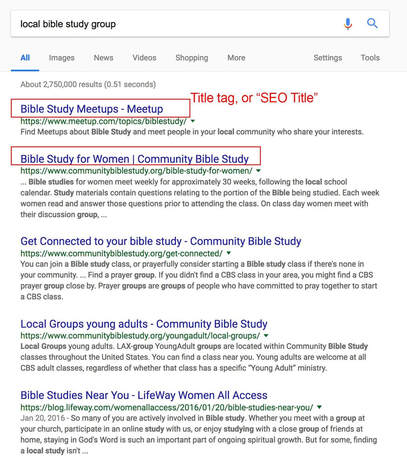
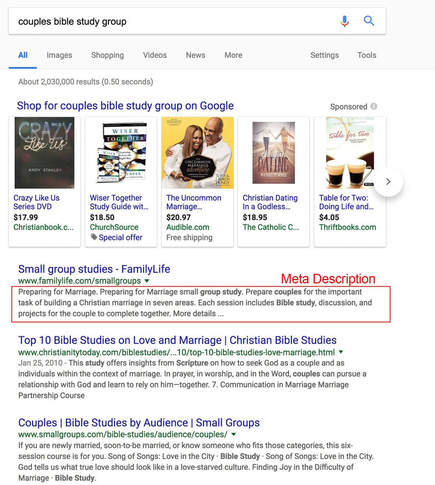
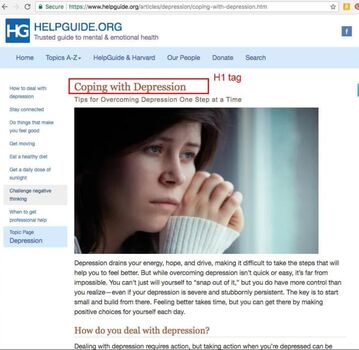
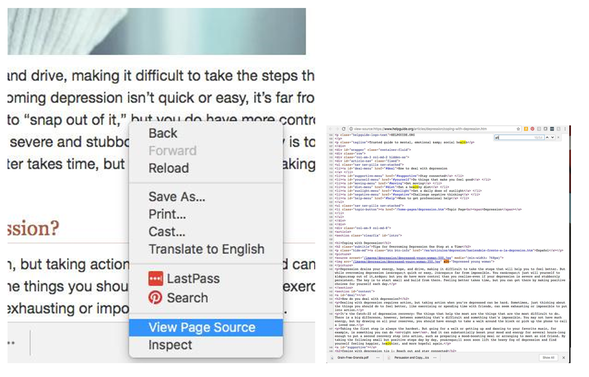


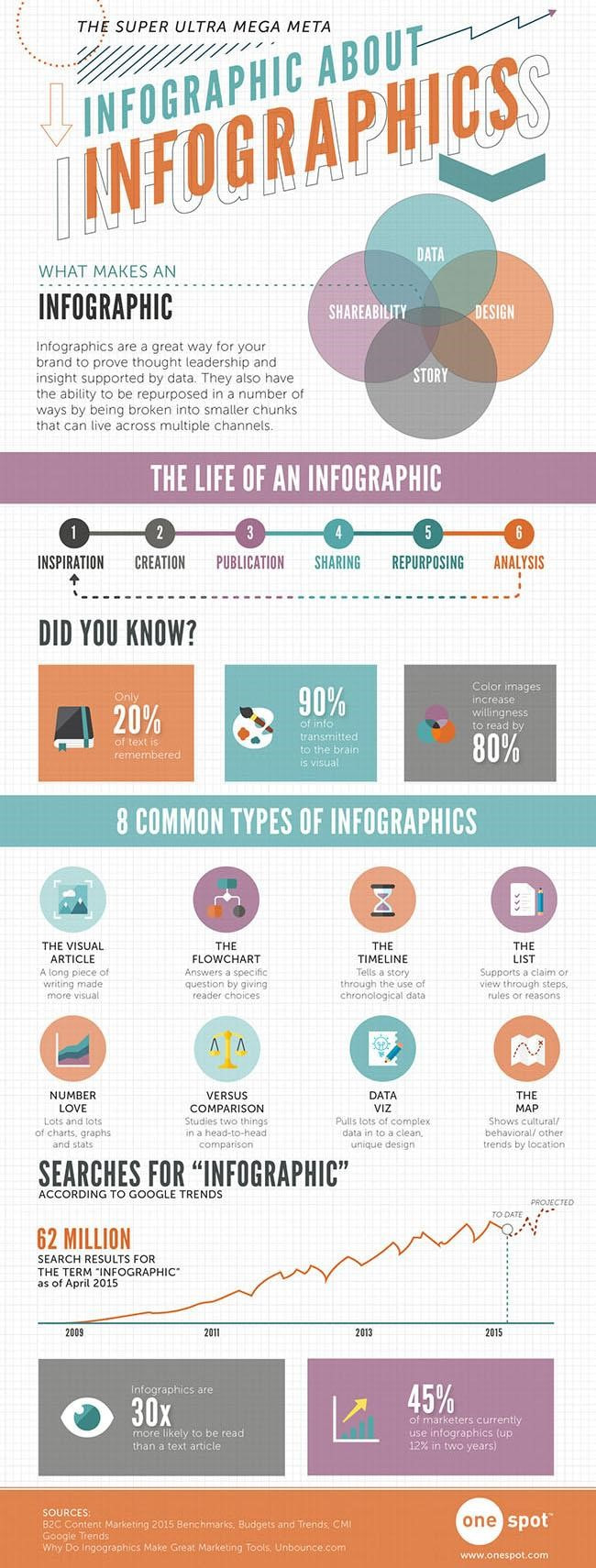

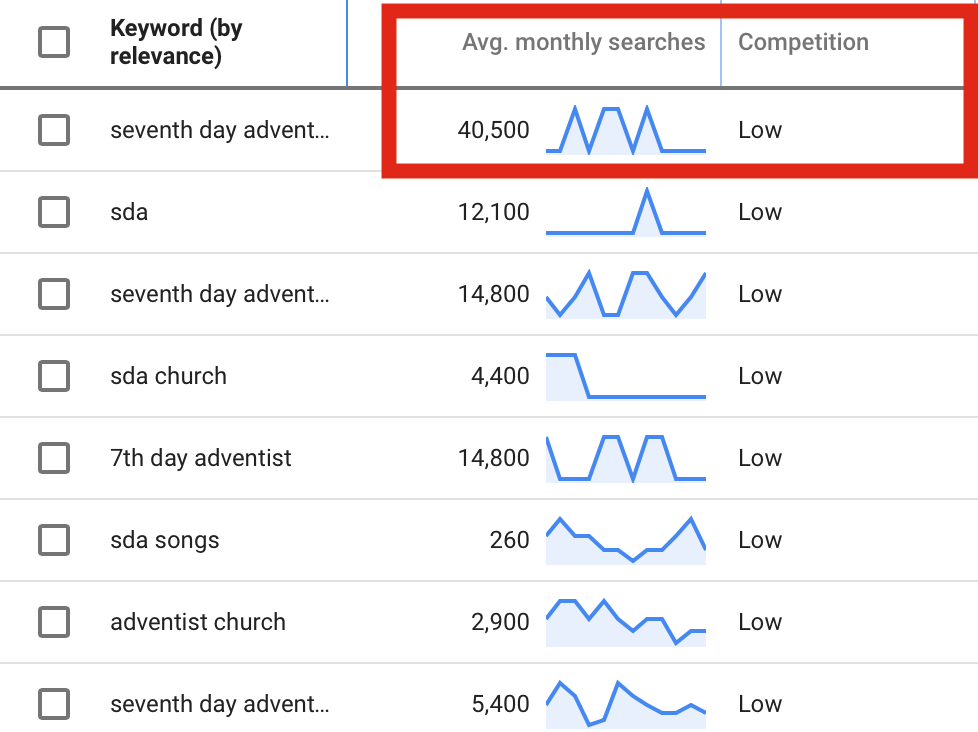

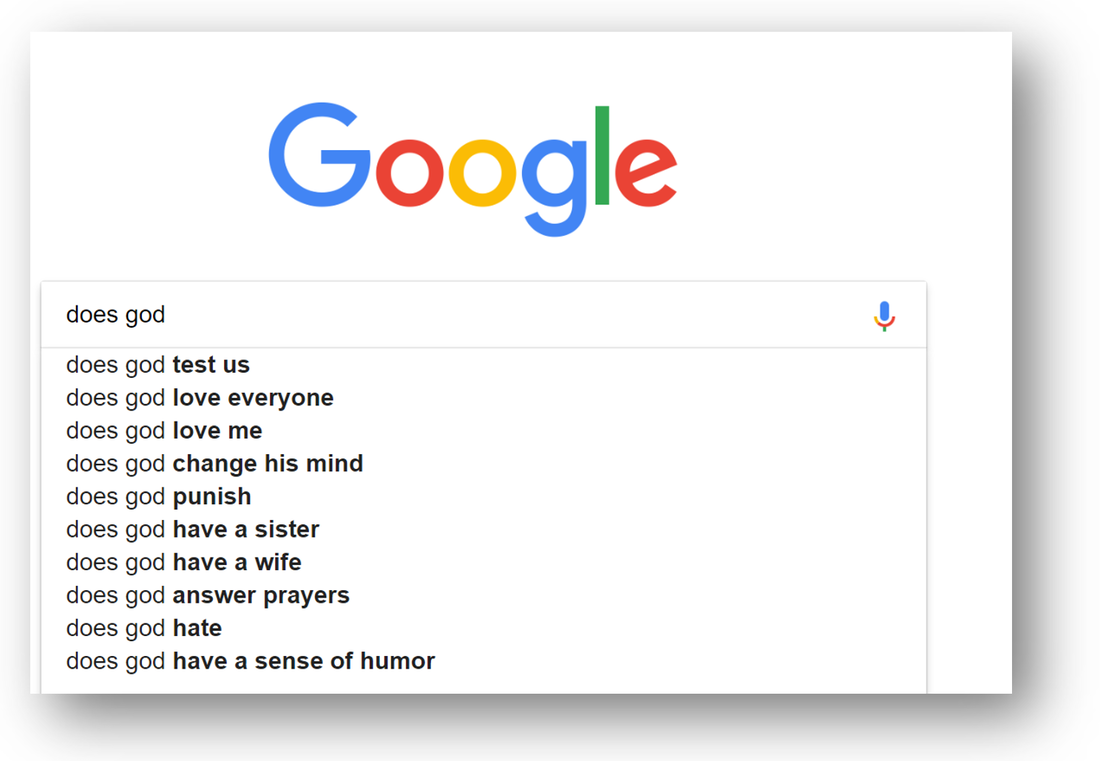
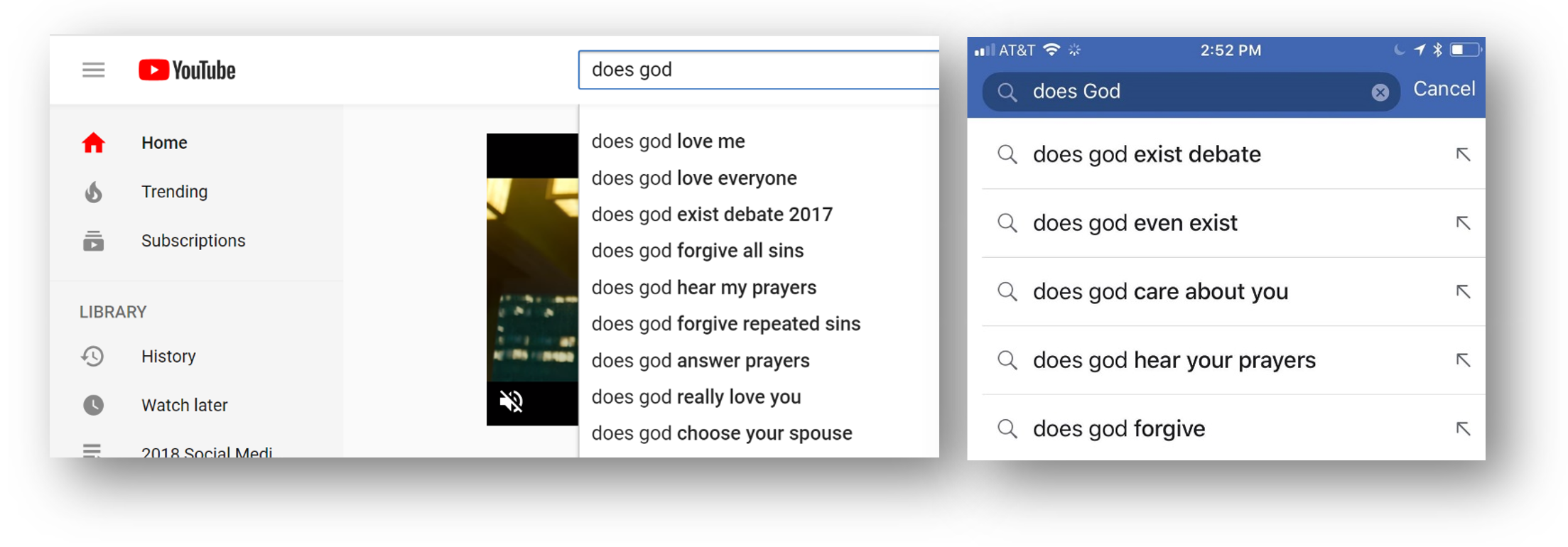




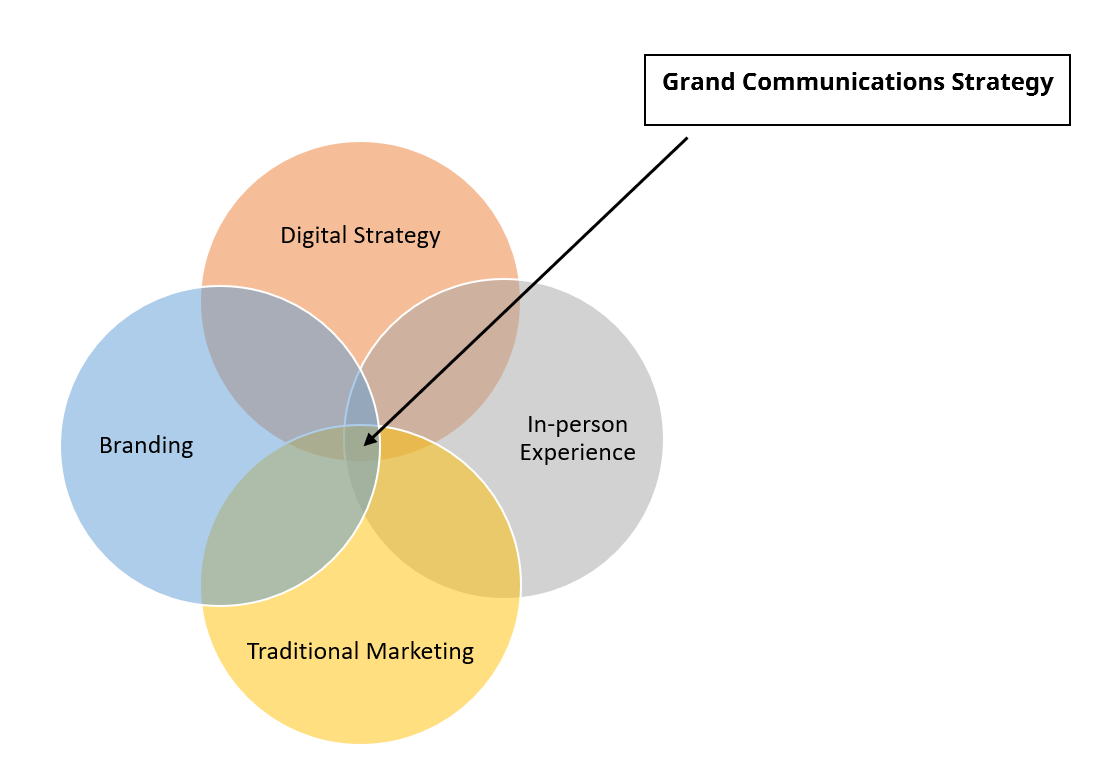



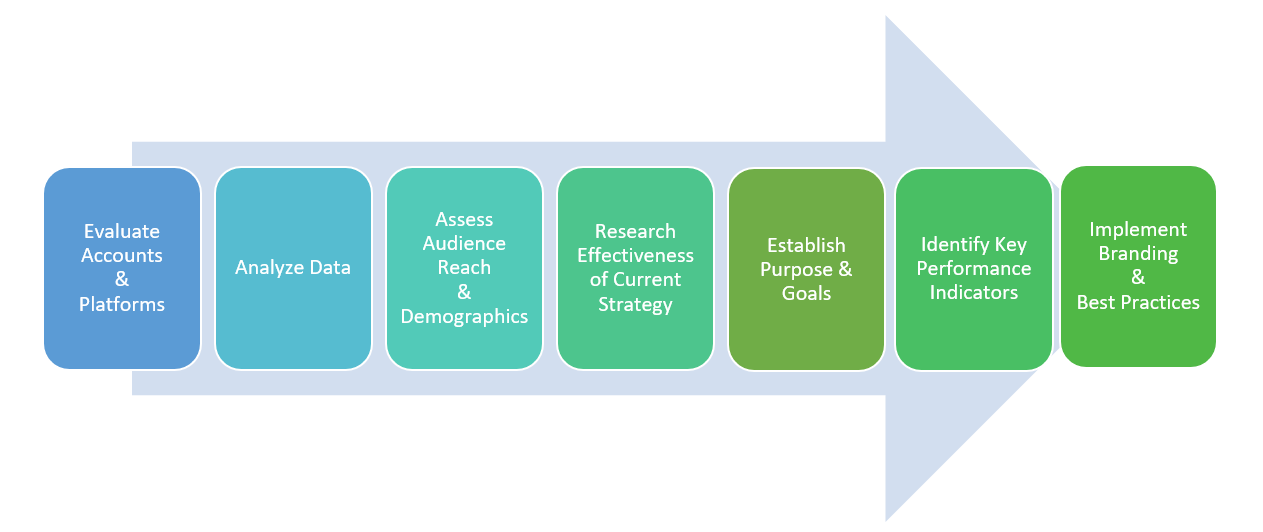


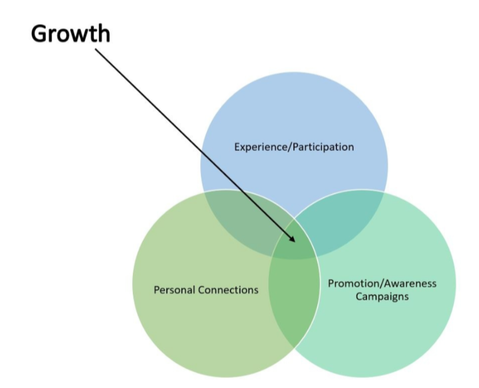
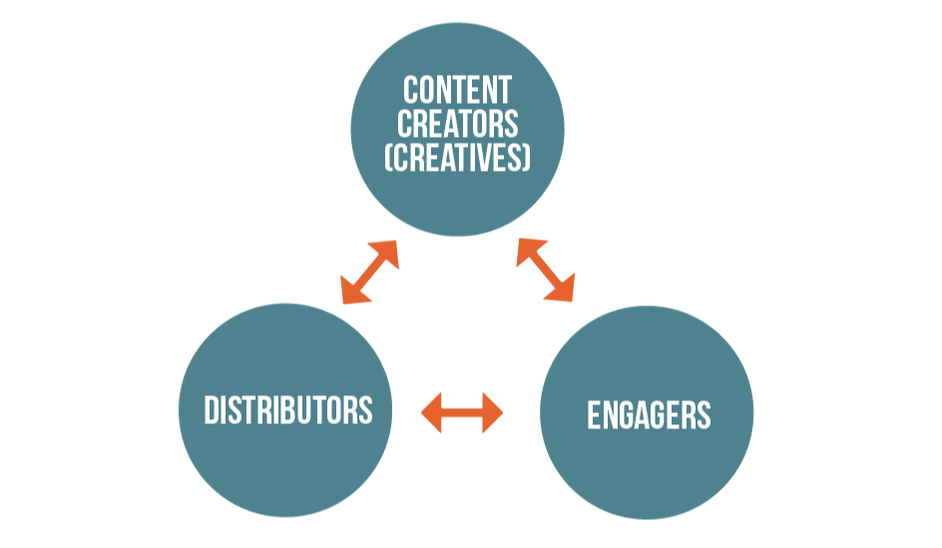

 RSS Feed
RSS Feed